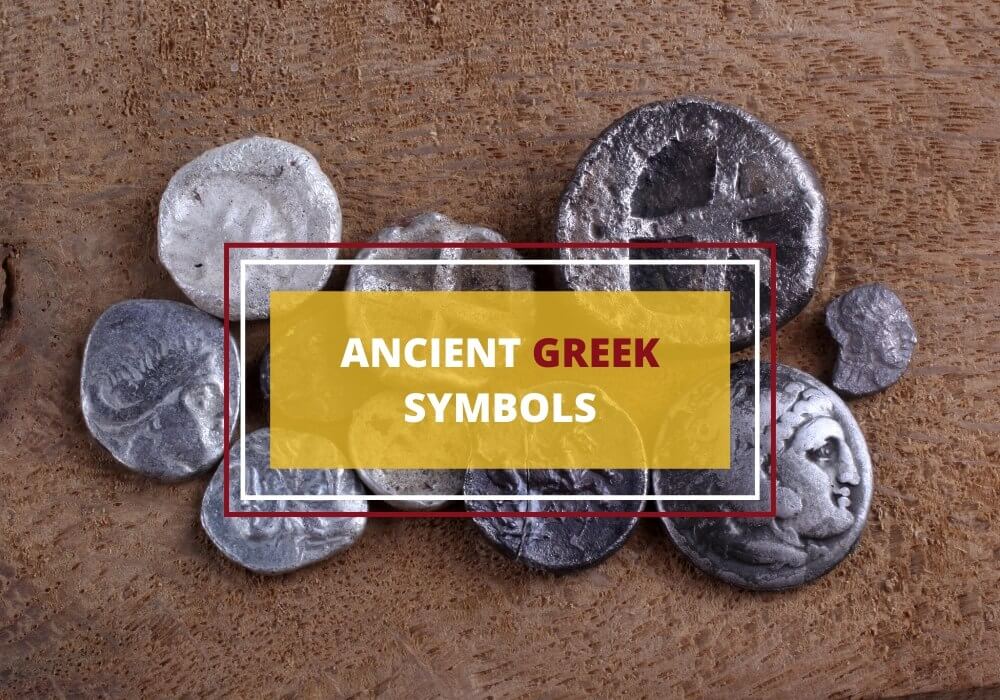
Table of Contents
The Ancient Greek civilization was one of the most important in history, that lasted from around 800 BC to 146 BC. It has given the world some of the most well-known symbols and motifs that are still relevant and popular.
While a large number of ancient Greek symbols were derived from Greek Mythology, there were also some that originated in other ancient cultures and civilizations and were later adapted by the Greeks. Many of these famous symbols are representative of eternal life, healing, strength, power, and rebirth.
In this article, we’ll be looking at 17 of the most interesting and popular Greek symbols many of which come with different interpretations.
1. Hercules Knot
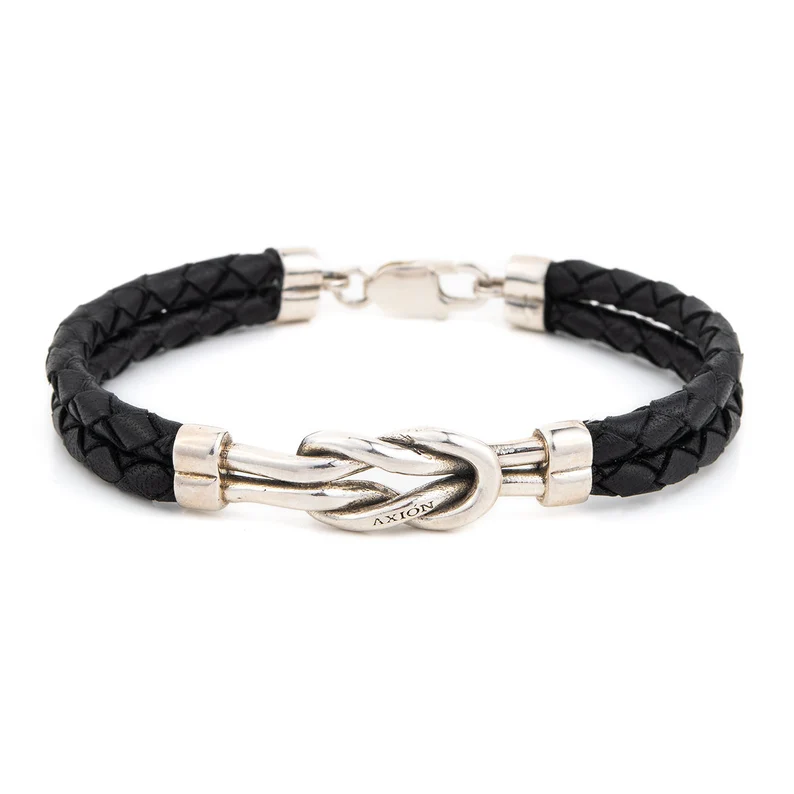
Hercules’ Knot, known by many names including the Knot of Hercules, Love Knot, Marriage Knot and Heracles Knot, is an ancient Greek symbol that represents undying love, loyalty and commitment. It was a highly popular symbol at Greek weddings and the phrase ‘tying the knot’ is said to have originated from it.
The knot is made with two entwined ropes, believed to symbolize the legendary fertility of the Greek God, Hercules. Although it was initially used as a healing charm in ancient Egypt, the Greeks and Romans also used it as a protective amulet and love token. It was a part of the marriage festivities, incorporated into the protective girdle worn by the bride which the groom was to ceremonially untie.
The Hercules knot is now known as the ‘reef knot’ and has been used for many purposes over the years since it’s one of the easiest knots to manipulate and holds fast.
2. Solomon’s Knot
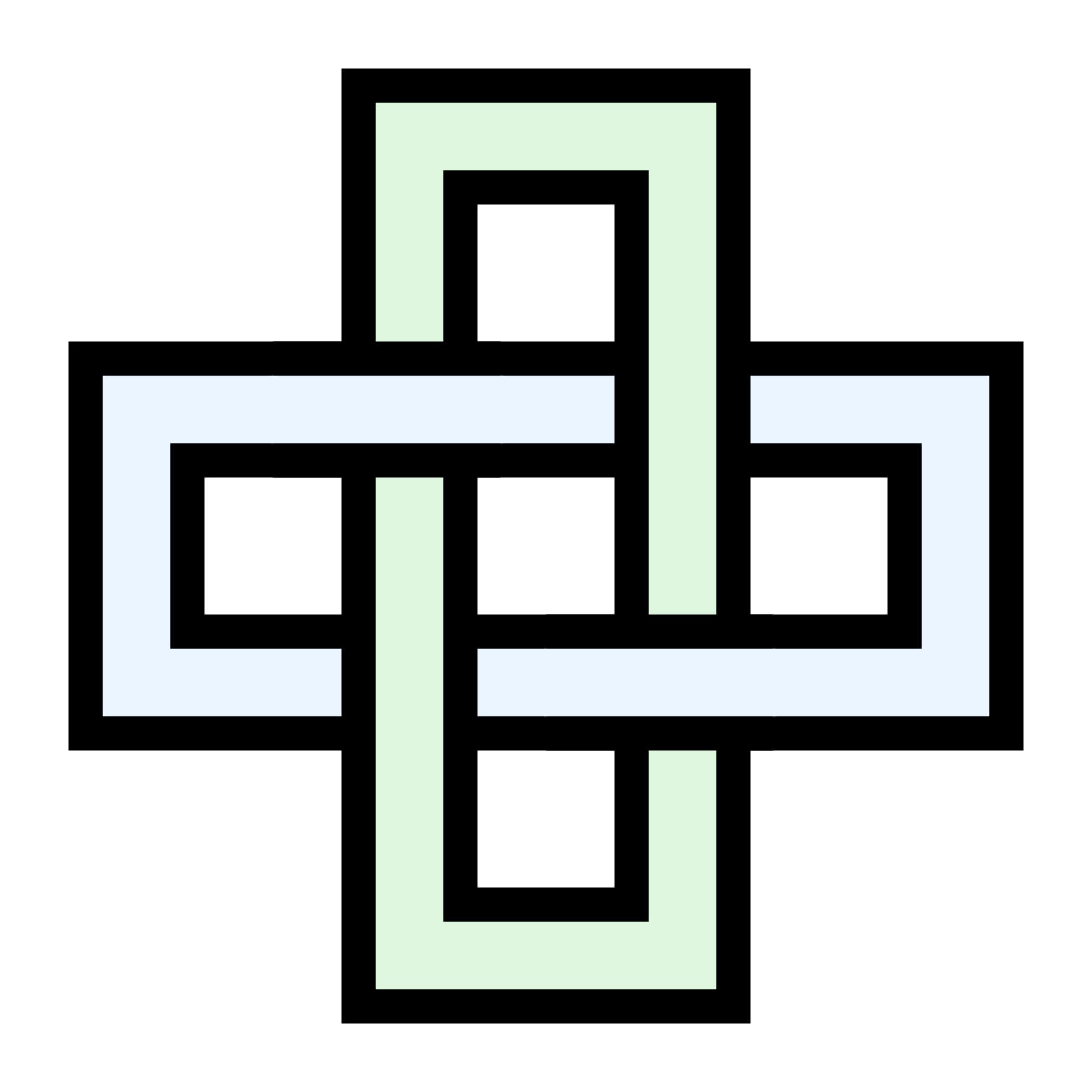
A traditional decorative motif in Greek Culture, Solomon’s Knot (or Solomon’s Cross) consists of two closed loops that are doubly interlinked. When laid flat, the knot has four crossings where the loops interweave over and under each other. Although it’s called a knot, it’s actually classified as a link.
There are several legends regarding the design of Solomon’s knot, with each one focusing on the interconnectivity of its two loops. It has been used across many historical eras and cultures and given a wide range of symbolic interpretations.
Since there’s no visible beginning or ending to the knot, it’s said to represent eternity and immortality, similar to the Buddhist Endless Knot. Sometimes it’s interpreted as a Lover’s Knot since it looks like two entwined figures.
3. Cornucopia

The Cornucopia, known as the ‘horn of plenty’, is a horn-shaped container overflowing with festive produce, nuts or flowers and is a popular Greek symbol of nourishment and abundance.
In Greek mythology, it’s said that the Cornucopia was created when the deity Alpheus turned into a bull while fighting Hercules. Hercules broke off one of Alpheus’ horns and gave it to the Nymphs who filled it with fruit and called it the ‘Cornucopia’.
The Cornucopia in modern depictions is a horn-shaped wicker basket filled with various types of vegetables and fruit. It has come to be associated with the celebration of Thanksgiving and it’s also seen in many seals, on flags and coat of arms.
4. Minotaur
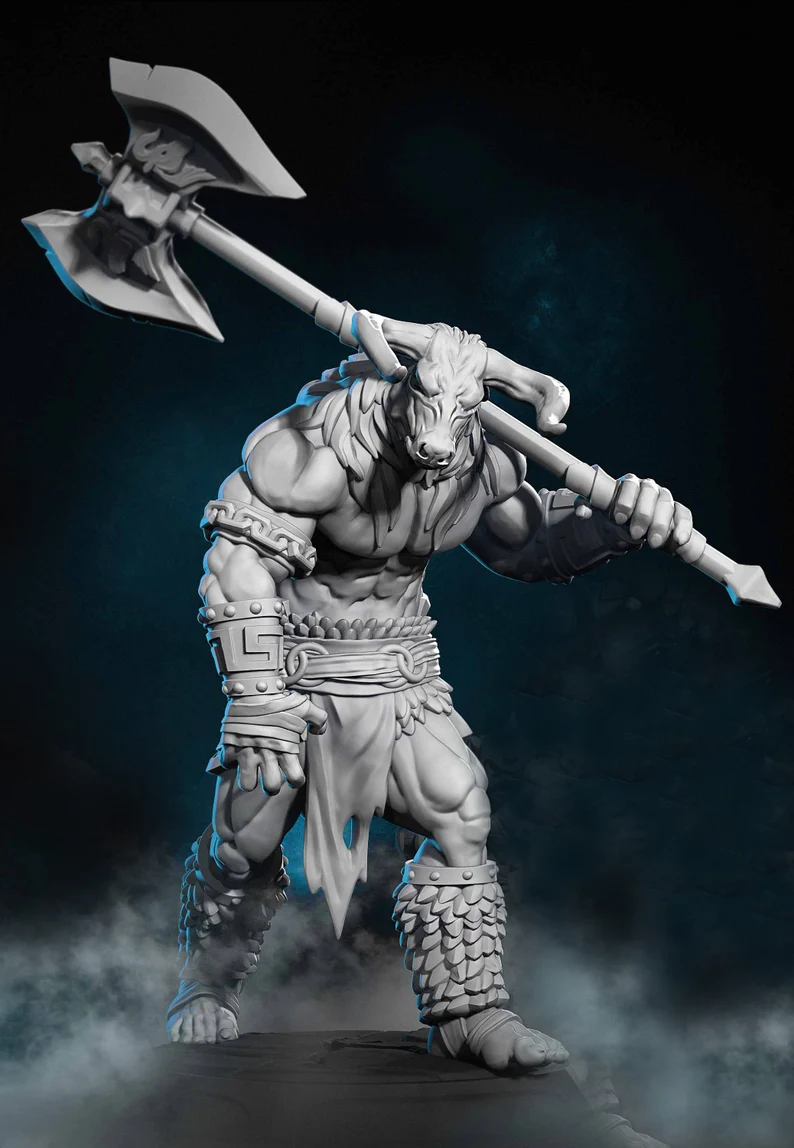
In Greek Mythology, the Minotaur was a large creature with the tail and head of a bull and the body of a man. As the unnatural offspring of the Cretan Queen Pasiphae and a majestic bull, the Minotaur didn’t have a natural source of nourishment and devoured humans to sustain itself.
The Minotaur dwelt within a gigantic maze known as the Labyrinth that was built by the craftsman Daedalus and his son Icarus at the behest of King Minos. It was highly complex and built so skilfully that even Daedalus could barely manage to get out of it once it was completed.
The Labyrinth housed the Minotaur, who received offerings of maidens and youths to eat every year and was eventually killed by Theseus.
5. Caduceus
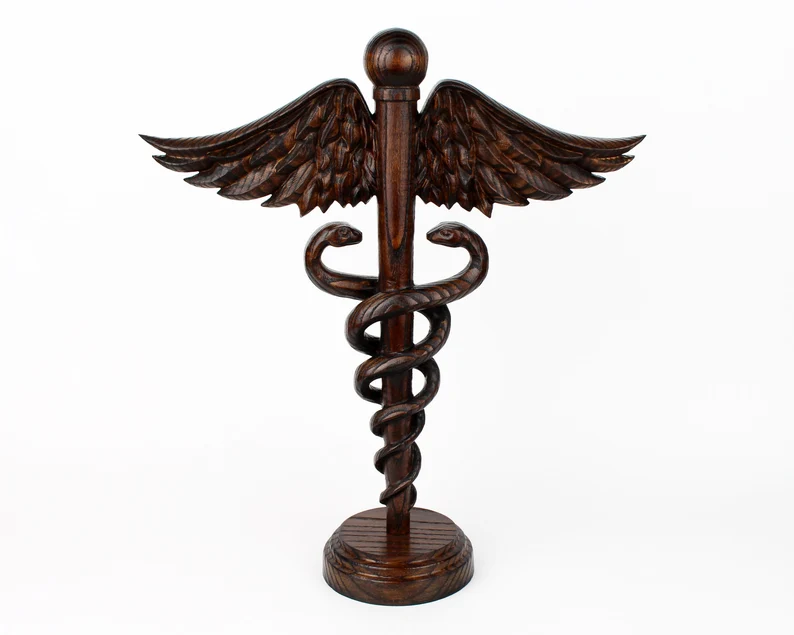
The Caduceus is the symbol of Hermes, the messenger of the Gods in Greek mythology. This symbol features a winged staff in the center with two snakes winding around it. According to the myth, the winged staff is said to be the rod of Aesculapius, an ancient demigod of medicine who healed the sick and brought the dead back to life.
The staff was originally entwined with two white ribbons but when Hermes used it to separate two fighting snakes, they coiled around the staff, replacing the ribbons to remain forever in balanced harmony.
Although it’s a popular ancient Greek symbol, the Caduceus symbol first appeared in the Jewish Torah in relation to healing and is now used as a symbol of medicine.
6. Labrys
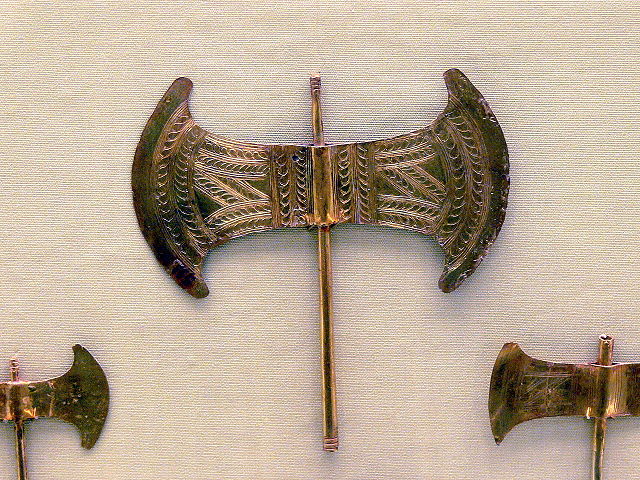
The Labrys, also called the pelekys or Sagaris, is an archaic symbol of a double-headed axe used by the Greek Thundergod Zeus to invoke storms. The axe was also a holy religious symbol of the Cretans.
According to mythology, the Labrys was closely associated with the ancient Minoan civilization where it was representative of authority and used as a symbol of the Mother Goddess. It was also said to represent a butterfly, symbolizing transformation and rebirth.
The Labrys was mostly depicted in the hands of women but after the fall of the Minoan civilization it came to be connected with male gods. Today, it’s used as an LGBT symbol, representing lesbianism and matriarchal or female power. It’s sometimes also used as a symbol of Hellenic Neopaganism.
7. Rod of Asclepius

The Rod of Asclepius is a popular symbol in Greek mythology that features a staff with a snaked wrapped around it. It is also known as Asclepius’ Wand, since it belonged to the Greek God Asclepius and had the miraculous ability to heal the sick. In Greek art, Asclepius is often typically seen wearing a robe and carrying a staff with a snake wrapped around it and it’s this version of the Rod that is now the symbol of the medical field.
While some believe that the snake came from the use of serpents in certain healing rituals performed by the followers of Asclepius, others believe that its presence symbolizes rebirth and rejuvenation, as a snake sheds its skin. The snake also symbolizes both life and death since its venom can kill one.
The Rod of Asclepius is featured in the Caduceus symbol which is also associated with medicine and healing. The difference between the two is that unlike the Caduceus symbol which has two serpents wound around the rod, the Rod of Asclepius has only one.
8. Sun Wheel
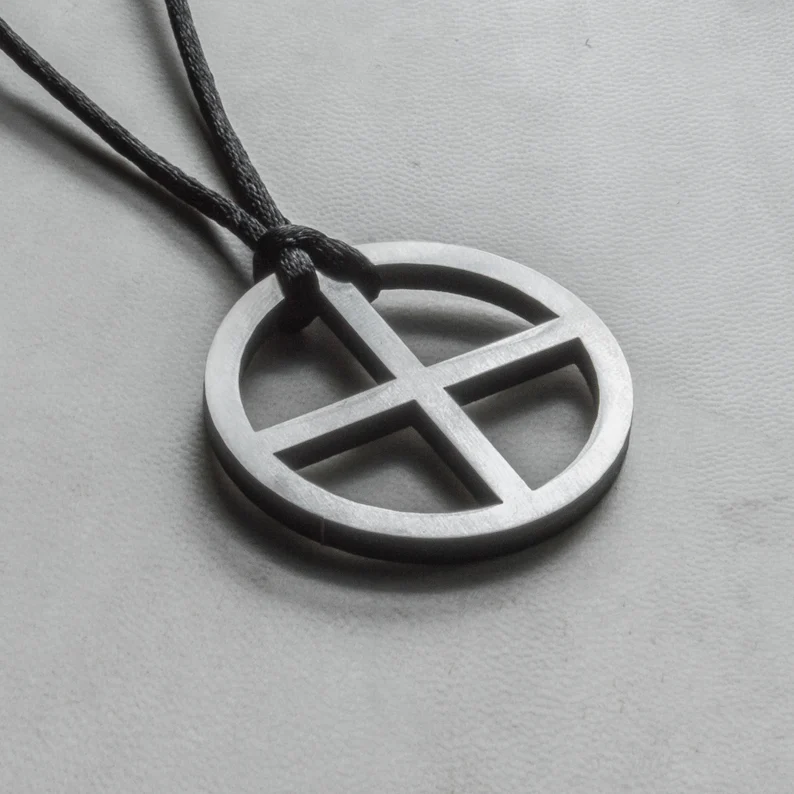
The Sun Wheel, Sun Cross or Wheel Cross is an ancient solar symbol that consists of a circle with an equilateral cross inside it. This symbol, and its many variations, are usually found in prehistoric cultures, especially during the Neolithic to Bronze Age Periods.
The sun wheel is said to represent the tropical year, the four seasons and the sun which represents power and magic. The symbol has been popularly used throughout history by various, religions and groups and is now a symbol in Christian iconography.
9. Gorgon
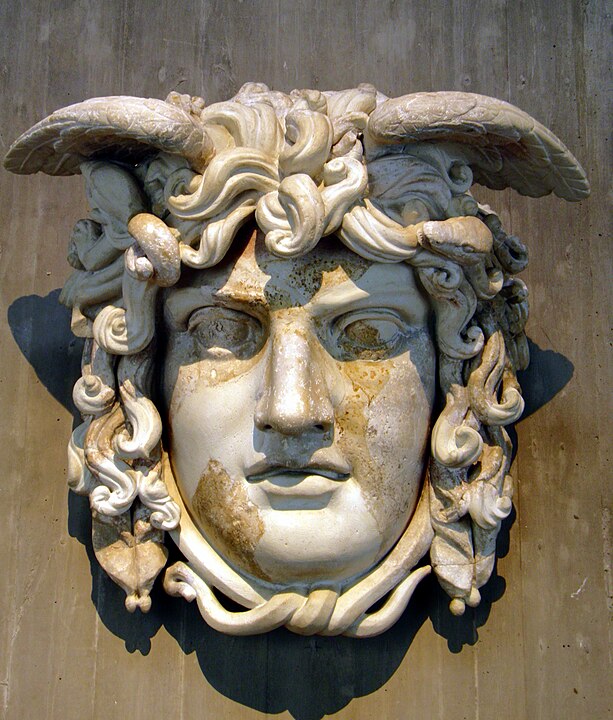
According to the legend, Gorgons were ugly, terrifying monsters with large wings, sharp claws and fangs and bodies which were covered with scales, like a dragon. They had deadly smiles, staring eyes and writhing snakes instead of hair. Gorgons were vicious monsters who remained undefeated, since anyone who saw their faces were instantly turned to stone.
There are three Gorgons in Greek mythology out of which the most famous is Medusa. She, along with her sisters, was turned into a Gorgon by the Goddess Athena as an act of revenge. Although her sisters were immortal, Medusa was not and she was eventually killed by Perseus. The Gorgon was a protective deity from ancient religious concepts and her images were placed around on certain items for protection.
Fun fact – the Versace logo features a Gorgon in the center surrounded by the meander symbol.
10. Labyrinth
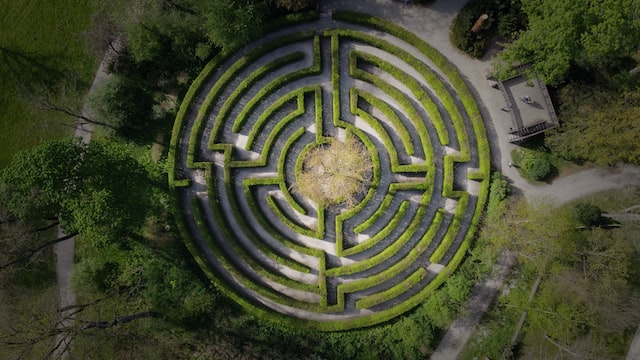
In Greek mythology, the Labyrinth was a highly confusing and elaborate maze that was designed and constructed by Daedalus, a skilled craftsman who built it for King Minos to imprison the Minotaur. It was said that no one who entered the Labyrinth could get out of it alive. However, the Athenian hero Theseus was successful at entering the maze and killing the Minotaur with the help of Ariadne, who gave him a ball of thread to retrace his way out of the labyrinth.
The image of the Labyrinth is an ancient symbol that represents wholeness, combining a circle and a spiral into a path that’s purposeful, though meandering. It’s symbolic of the journey to our own center and back out into the world and has been used as a prayer and meditation tool for decades.
11. The Omphalos
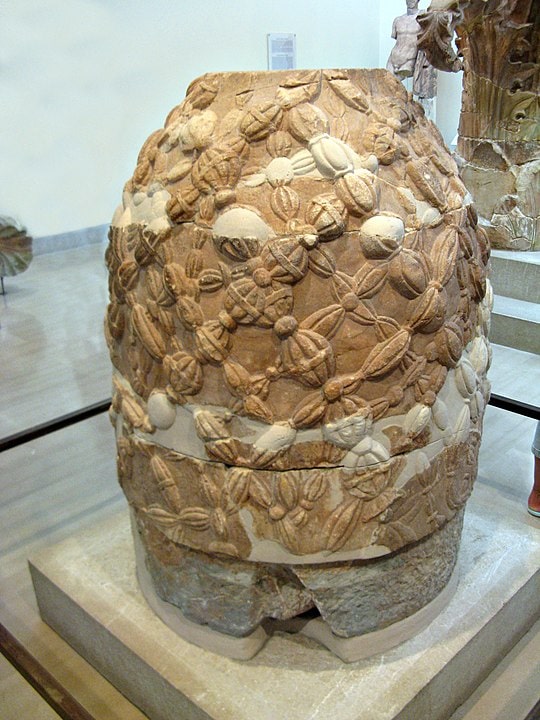
The Omphalos was an object of Hellenic religious symbolism in ancient Greek culture and was considered to be an object of power. According to the ancient Greeks, this religious stone got its name when Zeus sent two eagles across the world to meet at its center, the navel of the world. In ancient Greek, ‘Omphalos’ means navel.
The stone sculpture features a carving of knotted net that covers the entire surface and a hollow center which widens towards the base. It’s said that Omphalos stones allowed direct communication with the gods but understanding the use of the stone is uncertain since Roman emperors destroyed the site where the original was located back in the 4th century CE.
12. Mountza
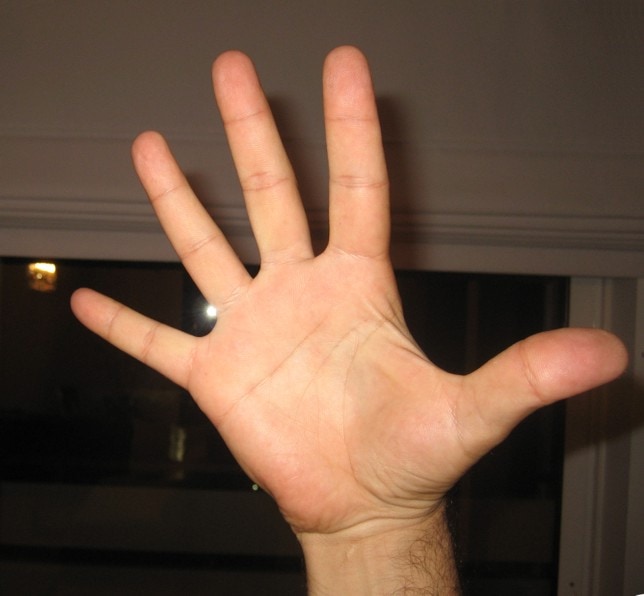
The Mountza (or Moutza) is the ancient Greek version of extending the middle finger at someone. This gesture is made by splaying out the fingers and of the hand and facing the palm towards the person at the receiving end. A double Moutza, with both hands splayed out, strengthens the gesture. It’s often accompanied by curses and swear words! The Moutza dates back to ancient times, where it was used as a curse and was supposed to repel evil spirits.
13. Dolphin

The dolphin, in Greek culture, is a symbol of friendship, playfulness, and transcendence. The ancient Greeks saw the dolphin as a blessed sign or omen when it appeared alongside ships.
Some accounts claim that Greek and Roman culture regarded dolphins as sacred guardians or sea travelers, which further highlights the connection that the Greeks had with the oceans. In this vein, dolphins were also considered messengers of Poseidon, the god of the sea, and were said to have carried the souls of the dead to the Islands of the Blessed.
The city of Taras even had a myth where a young boy on a dolphin’s back represented the guidance and protection of the sea god for their sailors.
14. Phi (Φ or φ)

Phi is the 21st letter of the Greek alphabet and holds special significance in art, architecture, and mathematics. It represents the Golden Ratio, a mathematical proportion that is believed to be especially pleasing to the eye and is found throughout nature. Having said this though, almost every Greek letter is imbued with meaning and has had a symbolic impact on culture.
15. The Meander (Greek Key)
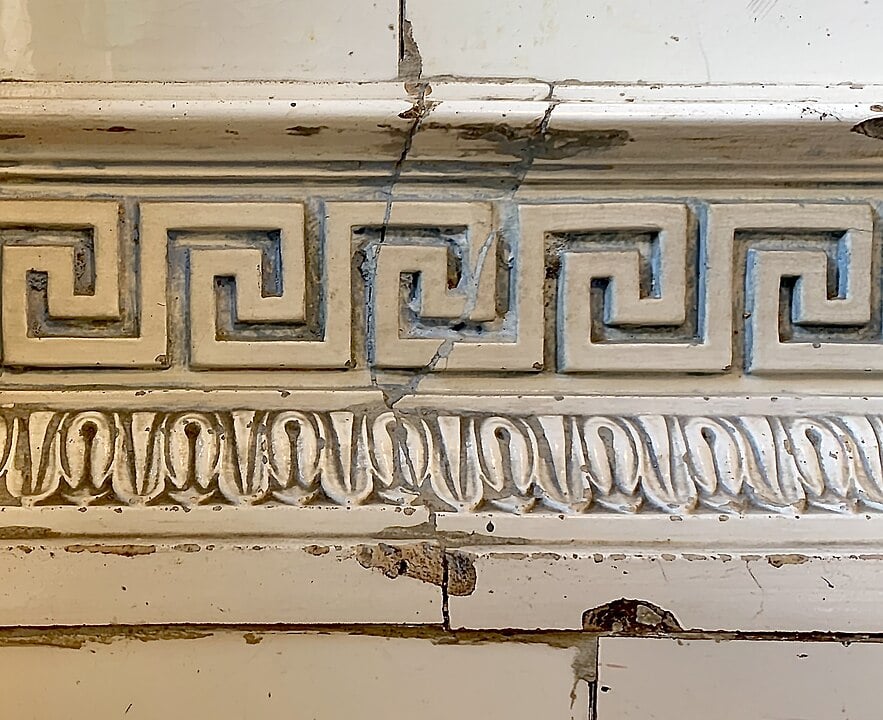
An important symbol in Ancient Greece, the Meander pattern represents unity and infinity. The repetitive, interlocking, rectangular patterns are seen on Greek architecture, pottery, and even in modern fashion. It represents eternal flow and the eternal journey of life. Even today, this is a popular symbol, that’s quite ubiquitous.
16. Laurel Wreath
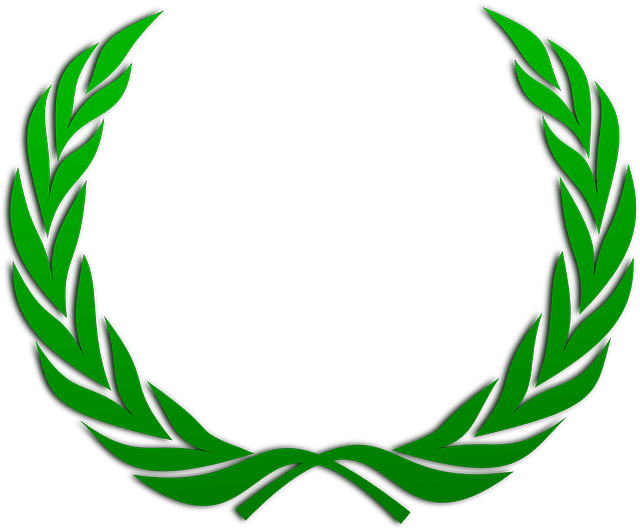
Today, we automatically tend to connect laurel wreaths with victory and victors. But this association has its origins in ancient Greek. Different from the olive wreath, the laurel wreath is symbolic of victory and honor. Emperors, poets, and victorious commanders were often crowned with a wreath of laurel leaves, highlighting their accomplishments. It’s a symbol of the god of music and the Olympic games, Apollo, whose association with the laurel tree comes from the myth of Apollo and Daphne.
17. Ouroboros
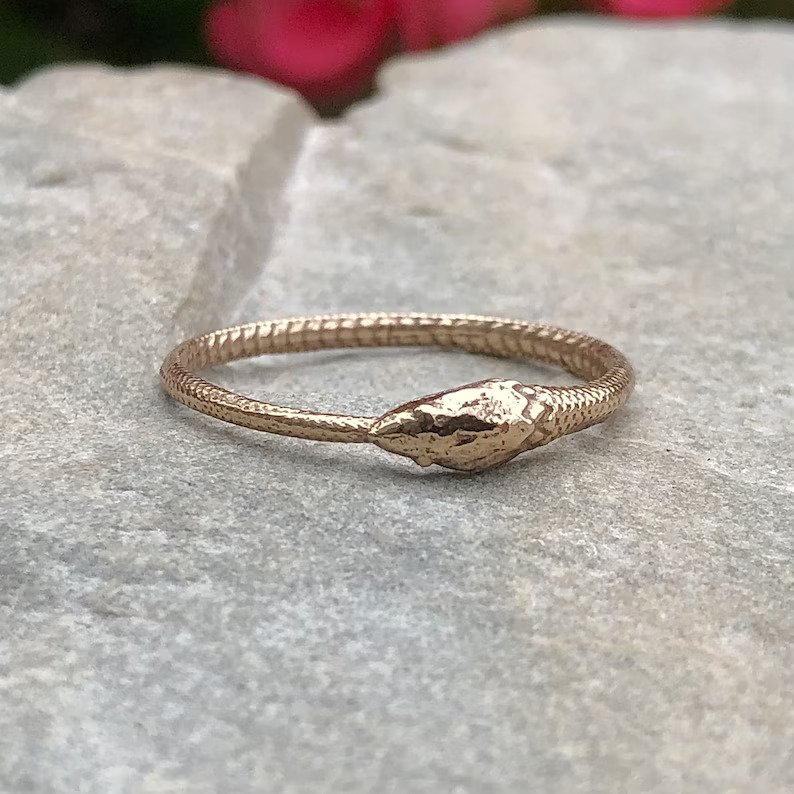
The word “Ouroboros” comes from the Greek “ouro” (tail) and “boros” (eating), thus meaning “tail eater”. It’s depicted as a serpent or dragon eating its own tail. This symbol is a representation of the cyclical nature of life and the eternal cycle of renewal—the death and rebirth cycle. It embodies the concept of infinity, the perpetual and cyclic nature of the universe. Today, the Ouroboros is one of the most powerful occult symbols and is highly revered in numerous traditions.
Importance of Symbols in Ancient Greece
To the ancient Greeks, symbols were of profound importance and meaning. The Greeks used symbols in many aspects of their daily lives, from religion and mythology to daily practices and civic matters. These symbols served as powerful tools to convey beliefs, values, stories, and customs. These symbols can still be found in their vase paintings, coins, architecture, and writing.
In Brief
There are many Greek symbols out there out of which we’ve only discussed the best-known ones, which are still used extensively in the modern world today. While some of these symbols are less influential or more obscure than others, each one is unique and has its own magnificent story.
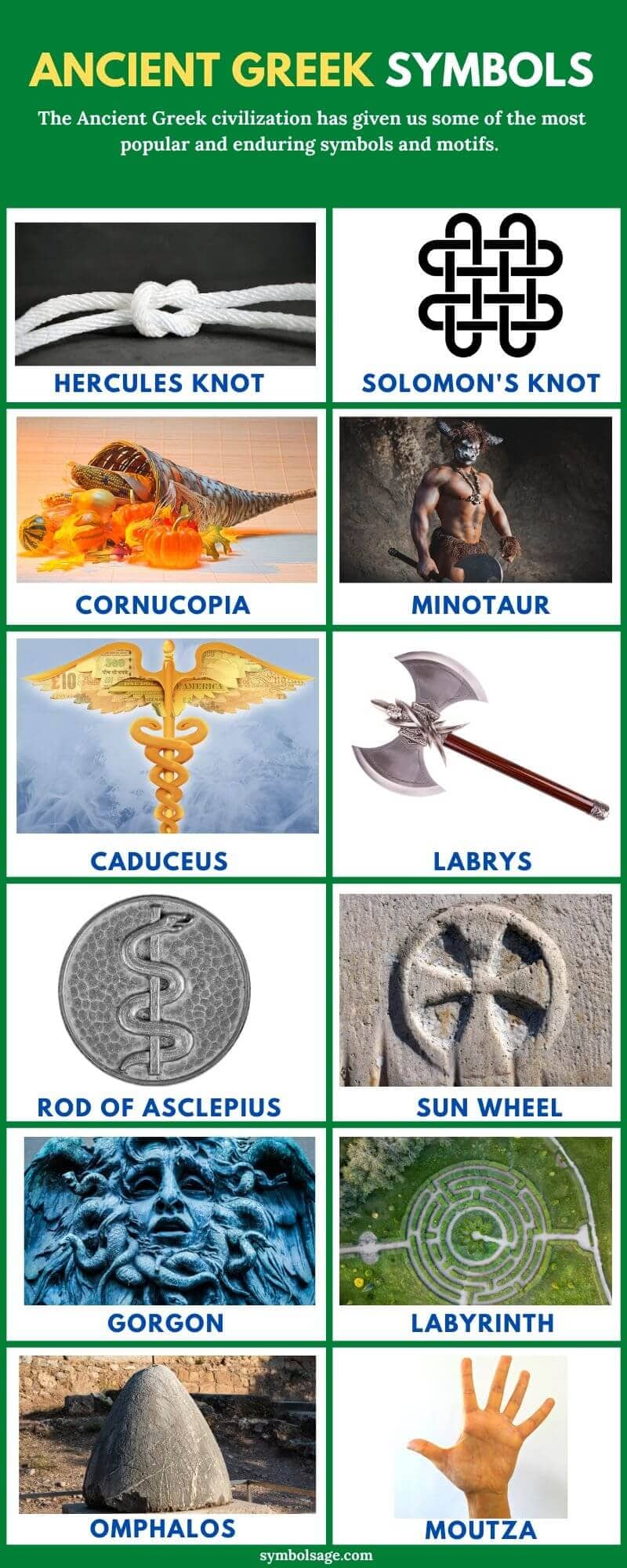
Related articles
Solomon’s Knot – Meaning and Symbolism
Cornucopia – History and Symbolism
The Sun Cross – Symbolic Meaning and History
Gorgoneion – Symbol of Protection
Gorgons – Three Hideous Sisters
Omphalos – History and Symbolism
Minotaur – The Monster of the Labyrinth in Greek Mythology








